A new golden era for Formula 1 — and the boom years are only just starting
It’s boom time for Formula 1 with sell-out races, massive TV audiences and edge-of-the seat action on the track. Not only that but a new generation of charismatic drivers are using technology to get closer to the fans than at any time since the open paddocks of the 1960s. As F1 arrives for its run of European races, Chris Medland examines how it all went so right for a sport that only a few years ago appeared stalled on the starting grid
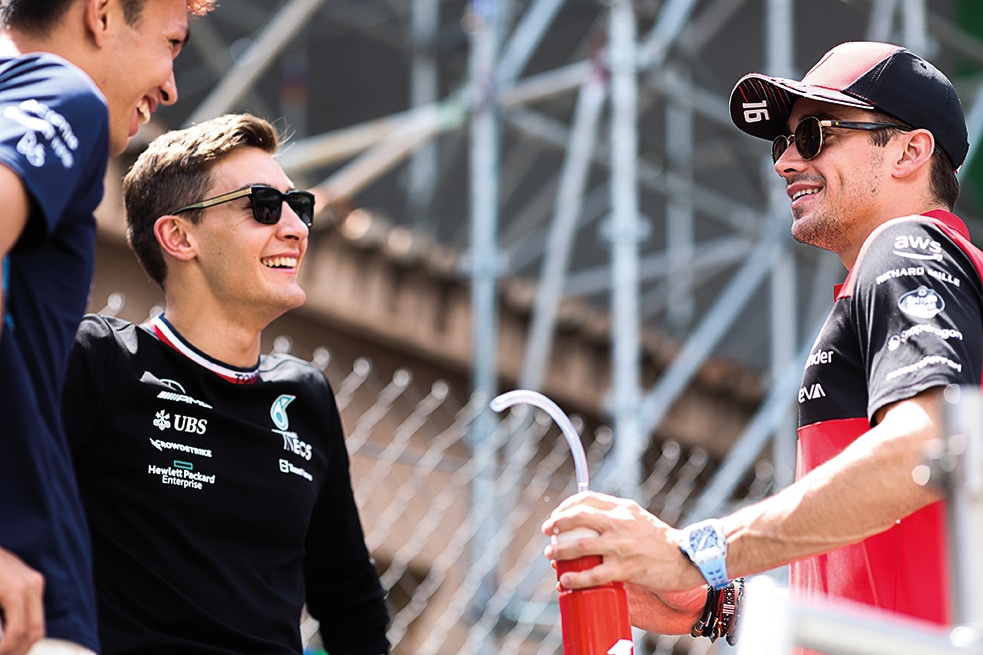
Silverstone. August 2, 2020. An eerie silence has fallen over the Northamptonshire circuit just five minutes before the British Grand Prix is due to get underway.
After the roar of a Spitfire above has faded away, aside from the low hum of generators on the starting grid, there’s very little sound. Swathes of empty blue seats surround the track, while fields that are normally full of tents and cars remain untouched. You might not be able to see it, but Formula 1 is booming.
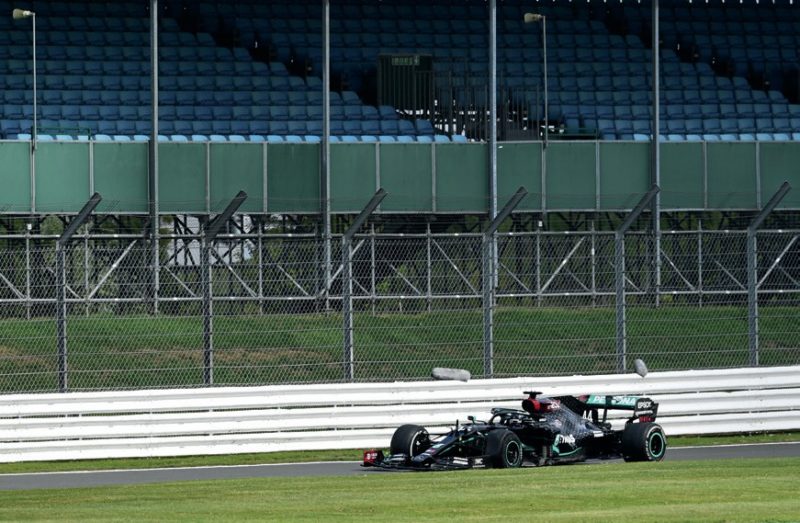
Empty stands at Silverstone in 2020, but Covid restrictions made F1 fans more hungry to experience racing.
And it’s doing so in a way every sport wants to, with a younger demographic. Over the past five years, as the global fan base has been measured at half a billion, the average age of those fans has dropped by two years to 37.
Nearly a quarter of people who call themselves F1 fans are aged between 16 and 24 – an increase of 6% since 2017 – and 40% of the total are female, itself a rise of 8% in that time. F1 is reaching a wider, younger and more diverse audience, but more than that, it is connecting with them.
“It’s a perfect storm, in a positive way, with a number of factors coming together,” declares F1’s motor sport managing director Ross Brawn. “We have new tracks which are exciting and interesting, a new generation of drivers who are very engaging on social media, a new car which tells the fans that we do care about the racing, and the Netflix coverage of Drive to Survive. Put all those together, plus people wanting to get back out and watch live sport after Covid, then, yes, we are pleased about the way things are going.
It’s up to us now to maintain it, and develop further, and not forget why we are seeing this surge in popularity.”
Of course, that scene from Silverstone was courtesy of the Covid pandemic that Brawn refers to. With many restrictions now lifted, sell-out races have become the norm, with 110,000 a day attending the Spanish Grand Prix at the Circuit de Barcelona-Catalunya; a venue that would attract a total of just 114,000 over three days for MotoGP two weeks later.

According to Red Bull, there are 36 million Formula 1 fans in America; 243,000 were at the inaugural Miami GP
Perhaps the biggest physical example of the explosion has been seen in the United States. Austin attracted an attendance of over 400,000 across the race weekend in 2021, while Miami provided the biggest crowd the Hard Rock Stadium has ever seen, despite the race organisers deliberately limiting capacity rather than maximising numbers.
“Some have claimed that F1 risks losing its soul to showbiz”
The last time F1 tried to race in a car park, it was Caesars Palace in Las Vegas. An uninspiring layout and a sport imposing itself on a location could not make that one stick, despite rock-star drivers such as Gilles Villeneuve, Mario Andretti and Nelson Piquet.
Now, a race in a car park sees huge sums invested in a permanent track around a major sporting arena, with fake marinas, beach clubs and cable cars added for good measure.
And while television viewing figures pale into insignificance compared to other American sports, having the likes of David Beckham, Michael Jordan, Michelle Obama and Tom Brady all at the same event means their social media following alone will expose the sport to another half a billion.

Will.i.am, apparently, at the Miami GP
The glitz and glamour hasn’t come without its critics. Some have claimed that F1 risks losing its soul to showbiz. Such criticism reached fever pitch during last year’s controversial finale in Abu Dhabi which some interpreted as F1 wanting to create a false sense of drama.
However, F1’s embrace of TV and social media to appeal to fans and make it more accessible has personalised the sport, while harking back to what some regard as a golden age of racing when fans could easily relate to their heroes.
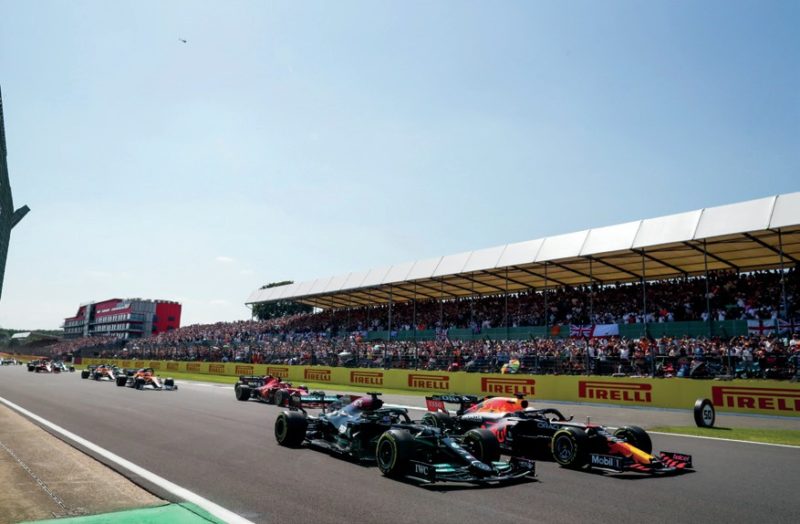
The rivalry between Lewis Hamilton and Max Verstappen was headline news last season.
Young fans may not be able to wander around the paddock within autograph distance of drivers such Graham Hill, Jim Clark and Jochen Rindt while peering over the shoulder of Bob Dance as he fettles a Lotus 49, but they can see Günther Steiner exploding with frustration in the pitlane, or watch Lando Norris while he live-streams his video gaming on Twitch, and offer commentary on his performance. Meanwhile millions can arguably get closer than ever to their favourite driver via the ubiquitous Twitter and Instagram.
“I think the access has been more and more open, and I think also Drive to Survive obviously has been a big help for Formula 1,” says Charles Leclerc, Ferrari’s charismatic championship contender. “To help the people to understand the sport a little bit more in a simpler way. And to actually put a face on the people that are in the background and working every day to try and make their car go faster.
“Also the places we go in the US. It’s becoming bigger and bigger… I think people are just loving the sport. And the title fight last year helped, so hopefully we can have a similar fight this year until the very last race.”
It is a view reflected elsewhere in the paddock where drivers are sensing a renewed verve about F1 as if the sport is living out a fresh set of glory days.
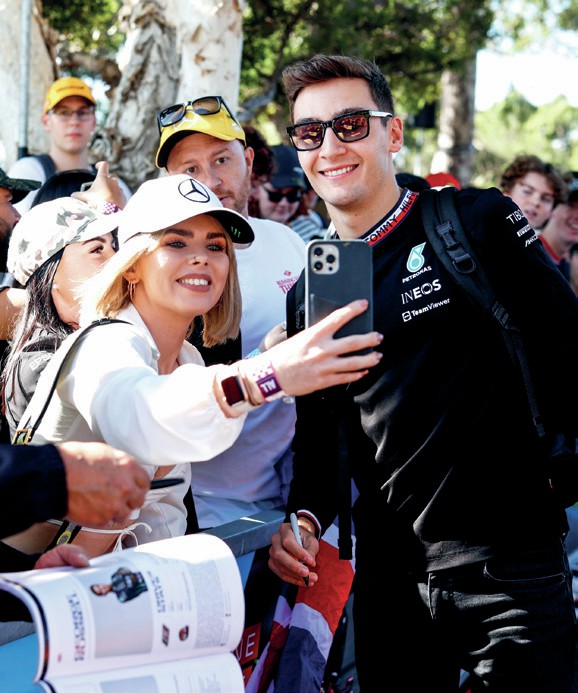
George Russell interacts with his fans via gaming and social media
“To me, it feels like now, like every race weekend… for sure, it’s all about racing – but there’s a bit more to it,” Valtteri Bottas says.
“Just from my side, it feels like the atmosphere is a bit more like an event than a race.
“There’s other things happening: there’s concerts and there’s DJs playing just before the start and stuff like that. I’ve personally felt much more energy in the last year or so than ever before during my career.”
But such a buzz doesn’t just come out of nowhere, and the “perfect storm” that Ross Brawn highlights has required some key players and platforms.
If there’s a trigger point, it was the change in ownership back in 2017 that saw Bernie Ecclestone and CVC Capital Partners relinquish control and Liberty Media take over with a very different view of how to run and grow the sport.
“Formula 1 was daunting – you go from a team of three to a team of 700”
The oldest remaining driver on the grid, Fernando Alonso, was seen by many as the saviour of F1 when he brought to an end the dominant run of Michael Schumacher and Ferrari in the mid-2000s, and he’s experienced the changes both from within the paddock and as an interested observer during a twoyear break in 2019 and 2020.
“A couple of years ago, especially when Liberty Media took control, I think we saw a few steps as a sport,” Alonso says. “We opened the sport to more people – here in the paddock there is more access, and we started doing a lot of things outside the track as well. Drivers are involved in those, and I think it has been going in a good direction.
“Also, we are living in a very different world now, with the digital platforms, giving access to many, many things that were unthinkable 10 years ago, 15 years ago. So all of that made the sport a bit more open and something that people can really enjoy now.
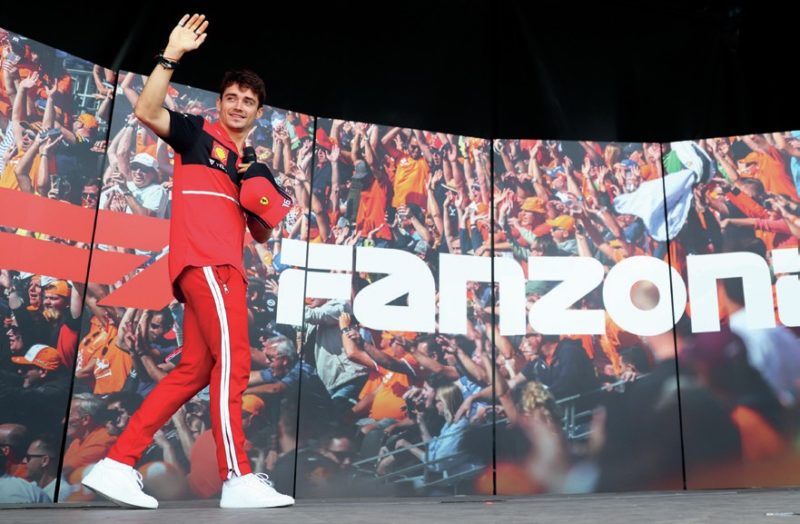
The F1 Fanzone has become the go-to area for spectators
Before they saw Formula 1 like it was something unreachable, or something very difficult to understand how to follow.”
When Alonso left McLaren at the end of 2018, he made way for a young rookie called Lando Norris to be paired with Carlos Sainz.
At the same time Alex Albon and George Russell joined the grid. The following season, Charles Leclerc stepped up to race for Ferrari with just one year’s experience.
Young drivers entering F1 is nothing new, but the way they so quickly gained a significant fanbase owes a lot to their authenticity.
“I feel like when I arrived into Formula 1 it was certainly daunting because it was a lot of change, a lot of people, a lot of fans, and you suddenly go from working with a team of three to a team of 700,” Russell admits. But everybody’s made me feel so welcome. It has allowed me to feel part of this big family, not necessarily just when I was at Williams or Mercedes, but F1 generally.
“I definitely feel like I can be myself and that’s so important. You don’t want to cover who you are. I feel like I’m a pretty down-to-earth, pretty straightforward guy so there’s no front you’re putting on. Just be yourself.”
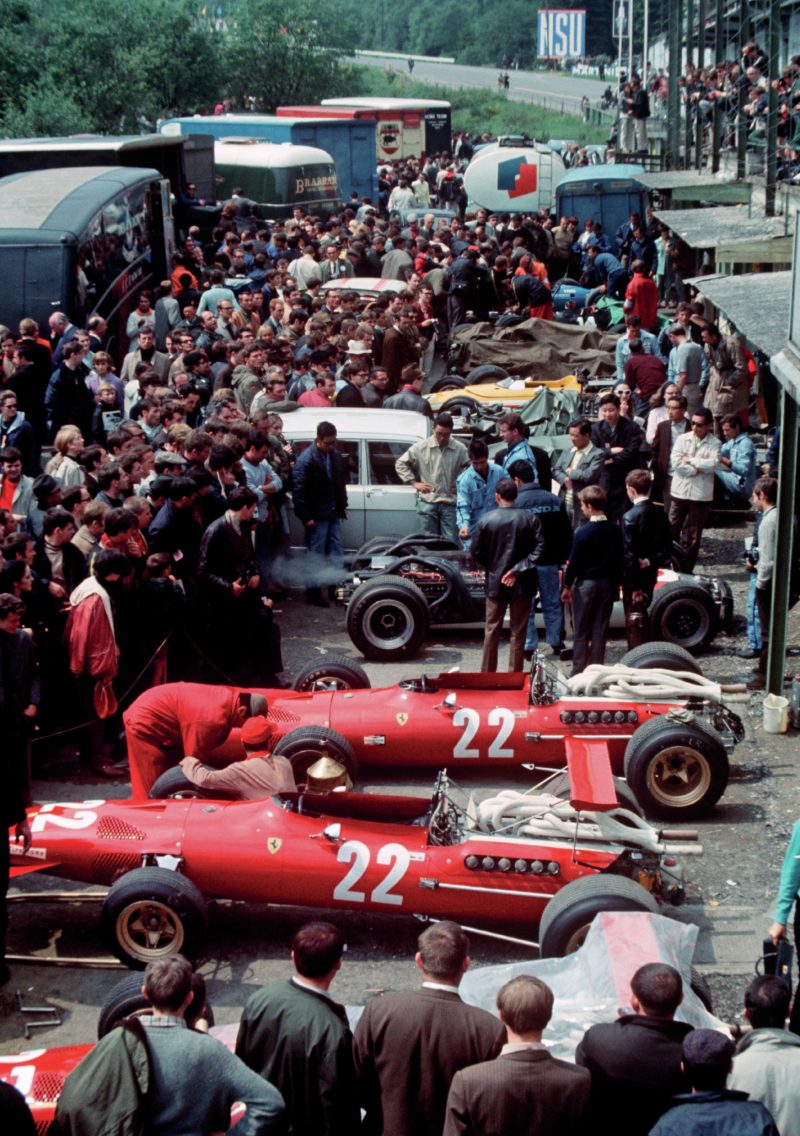
In the 1960s, fans were able to get tantalisingly close to their hero drivers and favourite racing cars, as this image of the paddock at the 1968 Belgian GP shows
Of course, F1 has been littered with amazing characters throughout its history – Sir Stirling Moss, James Hunt, Ayrton Senna, Sir Jackie Stewart and Kimi Räikkönen to name a few – but the difference in 2019 was the introduction of a brand new way of viewing them. A way that didn’t require someone to be a motor racing fan to become emotionally invested in the drivers competing.
“Our demographic has definitely got younger and the gender spread has got wider, so that’s been a very encouraging sign,” Brawn says. “There’s no doubt that the younger drivers, who are much more engaging on social media and other platforms, have been a strong part of that.
“We can’t ignore the input that Drive to Survive has had, and how much influence and how much impact that’s had on our sport, and the engagement of those drivers has been key to that. Behind-the-scenes is only interesting if the people are interesting, and we’ve got some really fascinating drivers.”
Not only that, they’re a crop that includes many who are willing to be open and honest about their personal lives and even their struggles, from veterans such as Lewis Hamilton to relative newcomers like Norris and Russell. “Seeing the human side of our drivers – because up until the last few years they’ve just been guys in helmets – you haven’t had that insight and that opportunity,” Brawn continues. “Through Drive to Survive and other initiatives – social media engagement and so on – I think drivers are being very open about the challenges they face and I think that makes them much more accessible and much more engaging to the fans.
“Drivers are being very open and that makes them more accessible”
“They start to understand and their approach resonates with a lot of people and the challenges they face. They are in a privileged position, but they face everyday challenges like the rest of us.”
One such challenge that nobody was immune to came in the form of the Covid-19 pandemic. The racing world stopped and there was no certainty over how and when it would restart, but the drivers somehow became even more popular and engaged with their fanbase, despite lockdown. Insight into their personal lives – partly through the streaming of online gaming sessions – became almost the norm, many drivers joining each other in doing so.
“Obviously the pandemic was such a tough time for so many people and it was very difficult,” Russell says. “I think you took a greater appreciation of life during that spell, but I think there were positives that came out from it for some people. For us as athletes we sort of connected with each other and we firstly wanted to have some fun for ourselves but secondly to try and keep this Formula 1 show on the road.
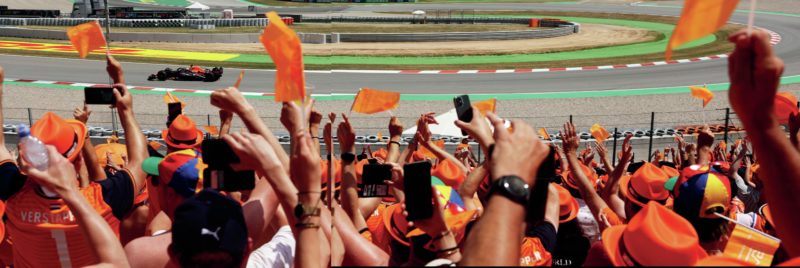
The average age of a Formula 1 fan is 37 and dropping
“I think I opened my eyes to how important it is to connect with the fans. The fans are the ones who make this sport happen – without the fans, without the viewership, we’d have nothing. So we need to give something back.”
That understanding is a key attribute in F1’s recent growth, according to McLaren Racing CEO Zak Brown. Many drivers and team members now appreciate the bigger picture, having been forced to see it by the stark reality of the Covid-19 situation.
“Our whole ecosystem begins with the fan; when you get the fan you have countries that want to hold races, you have broadcasters that want to spend money and broadcast our event, which then all trickles down to the racing teams, which then allows us to pay all the salaries of the men and women that work at our racing teams, drivers included,” Brown explains.
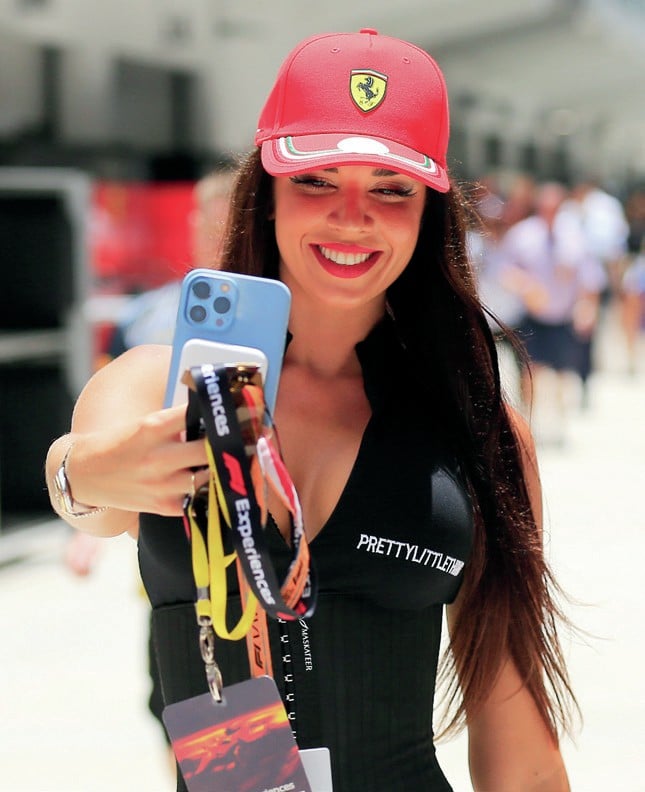
Female interest in F1 is sharply on the rise
“And I think that sometimes there’s a disconnect by various people in the sport – and I’m not just saying drivers – that don’t kind of piece it together. When they say ‘I don’t want to race here, I don’t want to do this, or that’, that ultimately feeds down to all of us making a living out of this great sport. “So I think we need to stay fan-focused, and recognise what Netflix has done for our sport. I don’t think we’d be sitting here at this racetrack realistically, probably, without what Netflix has done.”
If America has taught F1 anything about major events, it’s that you can’t guarantee the sporting aspect. A race could be epic or it could be dull, and fine margins can make the difference. What you can guarantee is everything that goes on around the race – the fan experience – and F1 has clearly started trying to do so. But that hasn’t stopped Brawn and his team from attempting to improve the offering on track, too, with investment and research at a level never before seen in the sport. And that wasn’t just confined to the 2022 cars.
While Silverstone was a bizarre event to attend two years ago, on television it was still an exciting spectacle, and keeping that central to the sport’s vision has been the driving force behind much of the developments since.
“We’re involved in every aspect; we’re involved in helping the track design, the car design, the race format,” Brawn explains.
“We’ve introduced the Sprint format which is a new initiative, so we’re very much involved in the whole event and making sure the experience appeals to the fans and to all the promoters and all our partners.
“My task is to produce great racing, great racing cars, and that’s always the foundation of everything we do. If we have poor racing we don’t have an entertaining sport, and then we’re building on quicksand.”
Whether its new tracks, new financial regulations or even new teams wanting to enter, there’s no quicksand to be found.
In the past five years, despite a global pandemic, F1 has built some extremely strong foundations that mean the current boom shows no sign of slowing down. The good times are back, and even better ones might be just around the corner.

